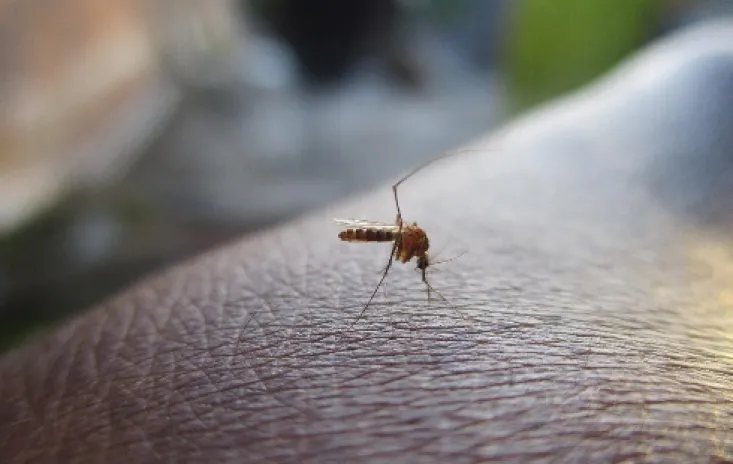
Ukrainian Diplomat Calls for Stronger Security Commitments Beyond NATO-Style Guarantees
Section: Politics
 As warmer months approach, mosquitoes emerge as one of the most significant nuisances. Understanding why these insects bite, the reasons behind the itching, and effective prevention strategies can help mitigate their impact.
As warmer months approach, mosquitoes emerge as one of the most significant nuisances. Understanding why these insects bite, the reasons behind the itching, and effective prevention strategies can help mitigate their impact.
Understanding Mosquito Behavior
Globally, there are estimated to be between 3,200 and 3,900 species of mosquitoes, with over 150 of these residing in the United States, including 60 species in North Carolina alone. Despite their negative reputation, many species are harmless. Only a small fraction, approximately 10-15 species, are known for biting humans.
Male mosquitoes primarily feed on nectar and sugars, while it is the females that seek blood meals. This blood is essential for the development of their eggs, which explains their biting behavior.
The Process of Biting
Female mosquitoes are attracted to the carbon dioxide we exhale. Upon landing, they use their specialized mouthparts to pierce the skin, which causes minor wounds and releases adenosine triphosphate (ATP) from the damaged cells, prompting the mosquito to feed. Along with feeding, the mosquito injects saliva that contains anticoagulants, preventing blood from clotting. This saliva triggers a reaction in the human body, leading to sensations of pain and itching due to histamine release and tissue damage.
The Risks Associated with Mosquito Bites
Beyond their irritating bites, mosquitoes are vectors for numerous serious diseases, including malaria and dengue fever, which collectively result in over 500,000 deaths annually. For instance, the tiger mosquito (Aedes albopictus), which has spread from Japan to various parts of the U.S., can transmit viruses like Zika. When such a mosquito bites an infected individual, it can acquire and later transmit the virus to another person, leading to serious health implications.
Protective Measures Against Mosquito Bites
To effectively reduce mosquito populations around homes, it is crucial to eliminate standing water, as all mosquitoes require water to breed. Regularly emptying containers that hold water, covering rain barrels, and maintaining clean bird baths are proactive measures that can significantly lower mosquito presence.
Additionally, using products like mosquito dunks, which contain bacterial agents harmful to mosquito larvae but safe for other wildlife, can be a beneficial strategy for managing breeding sites that are difficult to eliminate.
When spending time outdoors, utilizing insect repellents is highly recommended. While DEET is a popular choice, there are many other effective repellents available. It is important to apply these products correctly to ensure maximum protection without overusing them, especially on children.
Managing Mosquito Bites
If bitten, there are several remedies to alleviate discomfort. Applying an ice pack can help reduce swelling, while oral antihistamines can relieve itching. Topical cortisone creams may also be effective in promoting healing and reducing inflammation.
Interestingly, research suggests that some individuals may attract mosquitoes more than others, possibly due to unique skin chemical compositions. This remains an area of ongoing study, as scientists seek to understand the factors that contribute to this phenomenon.

Section: Politics

Section: News

Section: News

Section: News

Section: Arts

Section: Fashion

Section: News

Section: News

Section: News

Section: News
Health Insurance in Germany is compulsory and sometimes complicated, not to mention expensive. As an expat, you are required to navigate this landscape within weeks of arriving, so check our FAQ on PKV. For our guide on resources and access to agents who can give you a competitive quote, try our PKV Cost comparison tool.
Germany is famous for its medical expertise and extensive number of hospitals and clinics. See this comprehensive directory of hospitals and clinics across the country, complete with links to their websites, addresses, contact info, and specializations/services.
Und das ist gut so! is a delightful Christmas comedy that tackles the complexities of love and relationships. The story revolves around Stephanie and Bernd, who have crossed the line by cheating on their spouses and, unexpectedly, falling in love with each other. The plot thickens as Bernd realizes...



No comments yet. Be the first to comment!